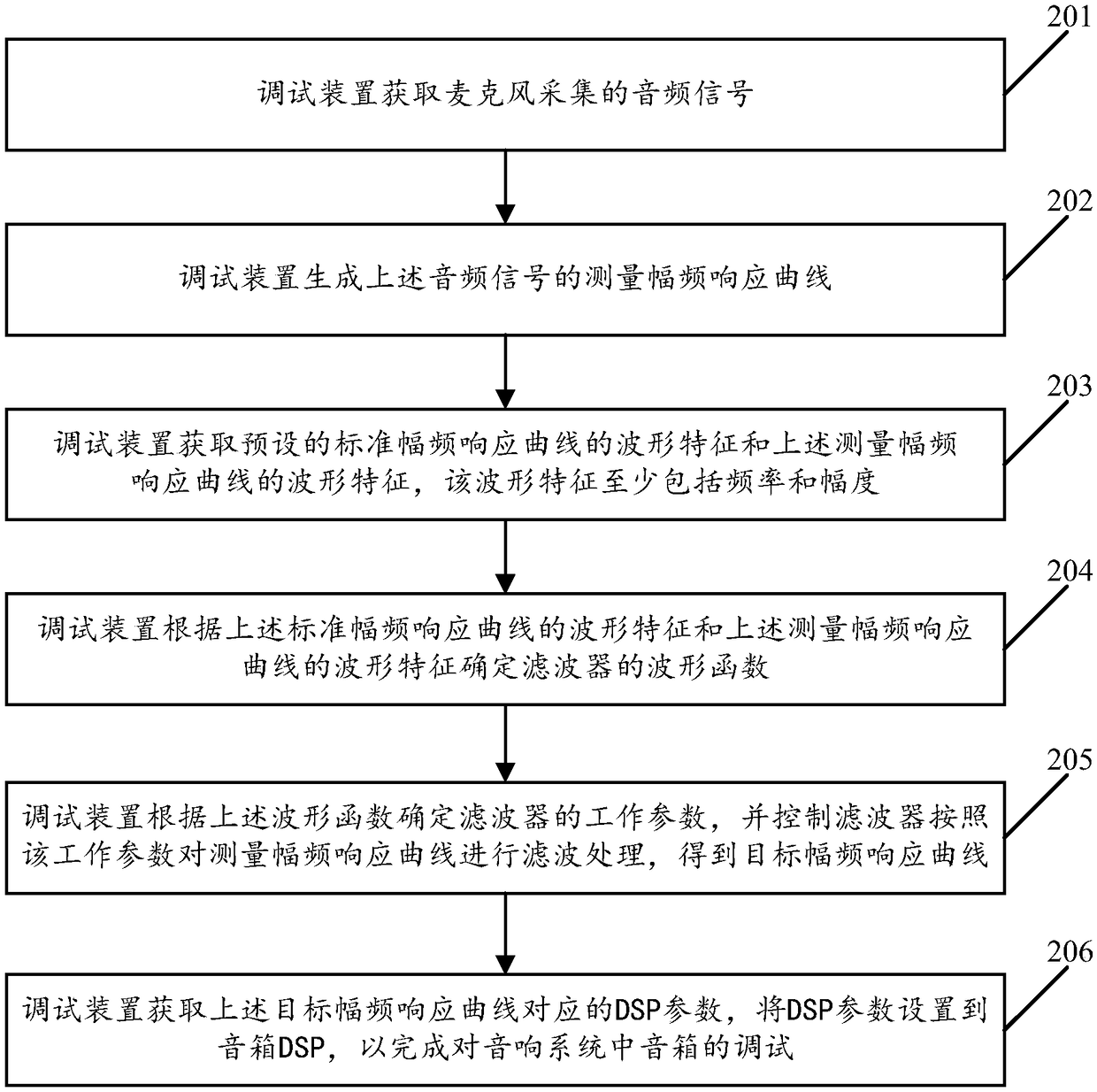Sound debugging method and device based on amplitude-frequency response curve
A technology of amplitude-frequency response curve and debugging method, which is applied in the direction of electrical components, etc., can solve problems such as low debugging efficiency, inability to guarantee sound quality, complicated debugging operation, etc., and achieve the effect of improving debugging efficiency and simplifying audio debugging operation
- Summary
- Abstract
- Description
- Claims
- Application Information
AI Technical Summary
Problems solved by technology
Method used
Image
Examples
Embodiment 1
[0069] see figure 1 , figure 1 It is a schematic flowchart of an audio tuning method based on an amplitude-frequency response curve disclosed in an embodiment of the present invention. Such as figure 1 As shown, the audio tuning method based on the amplitude-frequency response curve may include the following operations:
[0070] 101. The debugging device acquires an audio signal collected by a microphone.
[0071] In the embodiment of the present invention, the debugging device can obtain the audio signal collected by the sound input device. In particular, the debugging device can obtain the audio signal collected by the audio signal acquisition sensor of the non-directional measurement microphone, wherein the number of non-directional measurement microphones There may be one or more. Correspondingly, there may be one or more measurement points where the omnidirectional measurement microphone is located, which is not limited in the present invention.
[0072] As an optiona...
Embodiment 2
[0095] see figure 2 , figure 2 It is a flow chart of another audio tuning method based on the amplitude-frequency response curve disclosed by the embodiment of the present invention. Such as figure 2 As shown, the audio tuning method based on the amplitude-frequency response curve may include the following steps:
[0096] In the embodiment of the present invention, the audio tuning method based on the amplitude-frequency response curve also includes steps 201-202. For the description of steps 201-202, please refer to the detailed description of steps 201-202 in the first embodiment. The embodiment of the present invention No longer.
[0097] 203. The debugging device acquires the waveform characteristics of the preset standard amplitude-frequency response curve and the waveform characteristics of the above-mentioned measured amplitude-frequency response curve, where the waveform characteristics include at least frequency and amplitude.
[0098] In the embodiment of the ...
Embodiment 3
[0117] see image 3 , image 3 It is a flow chart of another audio tuning method based on the amplitude-frequency response curve disclosed in the embodiment of the present invention. Such as image 3 As shown, the audio tuning method based on the amplitude-frequency response curve may include the following steps:
[0118] In the embodiment of the present invention, the audio tuning method based on the amplitude-frequency response curve further includes steps 301-304. For the description of steps 301-304, please refer to the detailed description of steps 201-204 in Embodiment 2. The implementation of the present invention Examples will not be repeated.
[0119] 305. The debugging device acquires a corrected amplitude-frequency response curve corresponding to the waveform function.
[0120] 306. The debugging device inverts the measured amplitude-frequency response curve to obtain an inverted amplitude-frequency response curve.
[0121] In the embodiment of the present inve...
PUM
 Login to View More
Login to View More Abstract
Description
Claims
Application Information
 Login to View More
Login to View More - R&D
- Intellectual Property
- Life Sciences
- Materials
- Tech Scout
- Unparalleled Data Quality
- Higher Quality Content
- 60% Fewer Hallucinations
Browse by: Latest US Patents, China's latest patents, Technical Efficacy Thesaurus, Application Domain, Technology Topic, Popular Technical Reports.
© 2025 PatSnap. All rights reserved.Legal|Privacy policy|Modern Slavery Act Transparency Statement|Sitemap|About US| Contact US: help@patsnap.com



